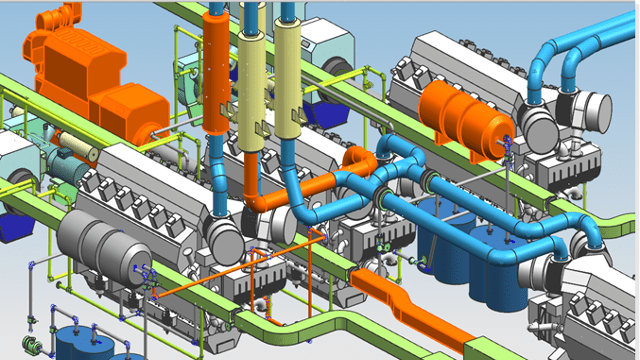In the realm of plant design and engineering, where precision and collaboration converge, the role of a PDMS (Plant Design Management System) Administrator emerges as a linchpin in orchestrating seamless and efficient projects.
This article delves into the pivotal responsibilities, key skills, and transformative impact of a PDMS Administrator in the dynamic world of plant design management.
- Defining the PDMS Administrator:
A PDMS Administrator serves as the guardian of the Plant Design Management System, ensuring its optimal functioning and harnessing its capabilities for comprehensive plant design projects. This role is multidimensional, encompassing system configuration, user management, troubleshooting, and maintaining data integrity within the PDMS ecosystem.
- Key Responsibilities of a PDMS Administrator:
a. System Configuration and Optimization: PDMS Administrators are tasked with configuring and optimizing the PDMS system to align with specific project requirements. This involves tailoring the software to the nuances of different engineering disciplines, establishing project databases, and defining standards for consistent workflows.
b. User Access and Permissions Management: Efficient collaboration within PDMS relies on precise control over user access and permissions. Administrators manage user roles, permissions, and access levels, ensuring that project stakeholders have the appropriate privileges for their designated tasks.
c. Clash Detection and Resolution Oversight: PDMS Administrators play a crucial role in overseeing clash detection and resolution strategies. They ensure that clash detection protocols are effectively implemented, allowing potential conflicts to be identified and resolved proactively during the design phase, minimizing disruptions during construction.
d. Materials and Specifications Administration: The management of materials, specifications, and standards is integral to maintaining design integrity. PDMS Administrators are responsible for overseeing the administration of materials, ensuring compliance with industry standards, and facilitating seamless integration with the broader design framework.
e. Data Integrity and Quality Assurance: Data is the backbone of plant design, and PDMS Administrators are guardians of its integrity. They implement best practices for data management, version control, and validation to uphold the quality and reliability of the digital twin created within the PDMS environment.
f. Troubleshooting and Support: In the event of challenges or issues, PDMS Administrators serve as troubleshooters, diagnosing and resolving problems to ensure uninterrupted project progress. Their expertise is vital in maintaining the stability and efficiency of the PDMS system.
g. Integration with Other Systems: PDMS often operates in an integrated ecosystem, and Administrators are tasked with facilitating seamless integration with other systems. This includes connecting PDMS with complementary solutions, ensuring data flows smoothly across the entire plant lifecycle.
- Key Skills for a PDMS Administrator:
a. Technical Proficiency: PDMS Administrators must have a deep technical understanding of the PDMS system, including its modules, functionalities, and best practices for system configuration.
b. Problem-Solving Acumen: The ability to troubleshoot and resolve issues is a critical skill for PDMS Administrators. Quick and effective problem-solving ensures the continuous flow of the design process.
c. Communication and Collaboration: Effective communication and collaboration are paramount. Administrators work closely with various project stakeholders, including designers, engineers, and project managers, requiring clear communication and collaboration skills.
d. Attention to Detail: Detail-oriented skills are crucial for managing data integrity, clash detection, and materials administration. PDMS Administrators must ensure that every element within the system aligns with project standards and industry regulations.
- Certification and Continuous Learning:
PDMS Administrators often undergo certification programs to validate their expertise. Given the evolving nature of technology and industry practices, continuous learning is encouraged to stay abreast of the latest advancements in PDMS and plant design management.
Conclusion:
A PDMS Administrator serves as the maestro in the symphony of plant design management, orchestrating a harmonious and efficient workflow. With responsibilities spanning system configuration, clash detection, materials administration, and beyond, PDMS Administrators are instrumental in ensuring the success of complex plant design projects.
In the dynamic landscape of plant engineering, their role is not just technical; it’s a strategic and transformative force that propels projects toward precision and excellence.



